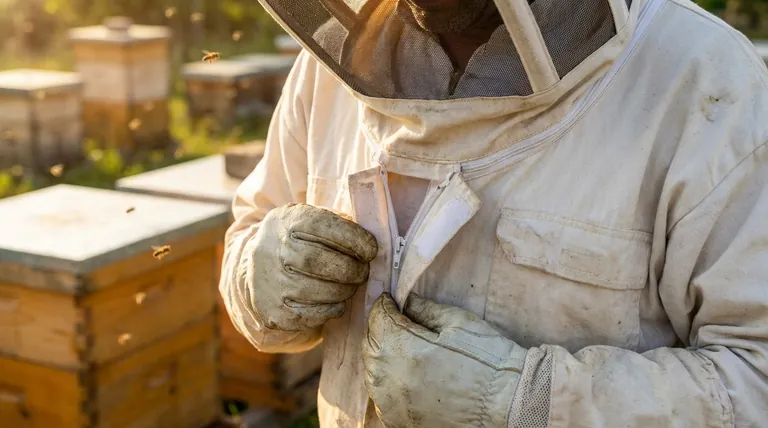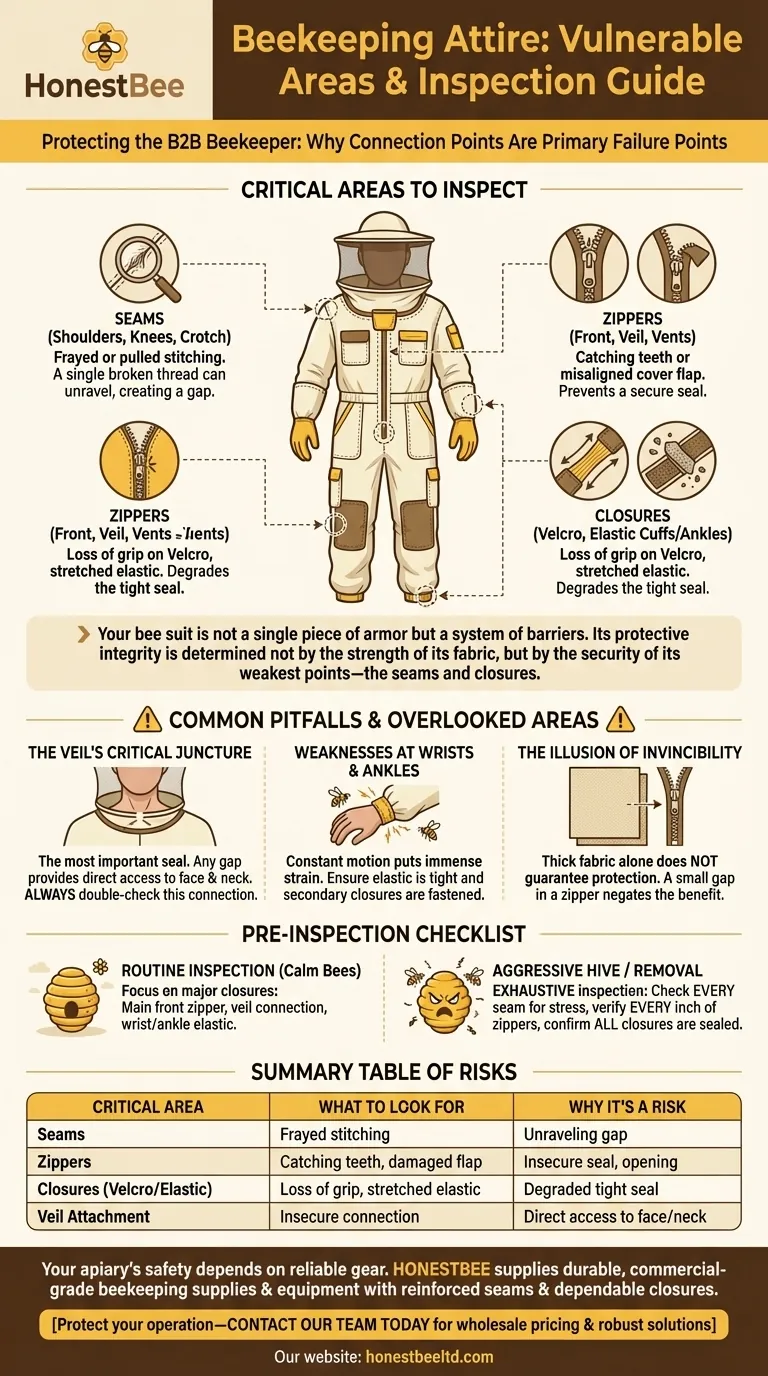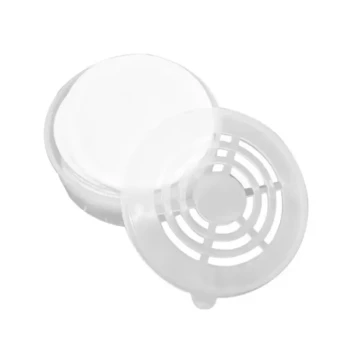The most vulnerable areas of any bee suit are its points of connection and closure. You must pay special attention to the seams, zippers, and any overlapping closures like Velcro or elastic cuffs, as these are the locations where a breach is most likely to occur.
Your bee suit is not a single piece of armor but a system of barriers. Its protective integrity is determined not by the strength of its fabric, but by the security of its weakest points—the seams and closures where bees can exploit the smallest gap.

Why Connection Points Are Primary Failure Points
A bee doesn't need to tear through fabric; it only needs to find a pre-existing opening. The construction of a suit inherently creates potential entry points that require diligent inspection.
Inspecting Seams for Strain
Seams are the literal threads holding your protection together. Under stress, they are the first areas to show wear.
Look for pulled or frayed stitching, especially around high-movement areas like the shoulders, knees, and crotch. A single broken thread can quickly unravel, creating a significant gap.
Auditing Zippers for Flawless Operation
A zipper is a mechanical closure with multiple failure points. A single misaligned tooth can prevent a secure seal, leaving a small but critical opening.
Ensure the zipper glides smoothly without catching. Most importantly, inspect the fabric flap that covers the zipper—this is a crucial secondary barrier that must lay flat and be secured properly.
Evaluating Closures for a Tight Seal
Velcro, elastic, and drawstrings are designed to create a tight seal against your body, but they degrade over time.
Velcro loses its grip as it fills with lint and debris. Elastic cuffs and ankles stretch out, losing the tension required to keep bees from crawling inside. Test these areas to ensure they still form a snug, impenetrable barrier.
Common Pitfalls and Overlooked Areas
Even a high-quality suit can be compromised by a simple oversight. A false sense of security is the beekeeper's greatest risk.
The Veil's Critical Juncture
The point where the veil attaches to the suit or jacket is the single most important seal to check. Whether it's a zipper or an overlap, any gap here provides direct access to your face and neck.
Always double-check this connection after putting on your suit. Run your fingers along the entire seal to confirm it is fully closed and secure.
Weaknesses at Wrists and Ankles
Your hands and feet are in constant motion, putting immense strain on wrist and ankle closures. These are the most common entry points for determined bees.
Ensure any elastic is tight and that any secondary closures, like Velcro straps, are functional and securely fastened over your gloves and boots.
The Illusion of Invincibility
Do not assume that thick fabric alone guarantees protection. A small gap in a zipper or a weak elastic cuff completely negates the benefit of heavy-duty material. A thorough inspection of closures is more important than the thickness of the canvas.
Your Pre-Inspection Checklist
Before approaching any hive, perform a quick but thorough suit inspection. Your approach can vary based on the temperament of your bees.
- For a Routine Inspection with Calm Bees: Your primary focus should be on the major closures—the main front zipper, the veil connection, and the elastic at your wrists and ankles.
- For Working with Aggressive Hives or Performing a Removal: Your inspection must be exhaustive. Check every seam for stress, verify every inch of your zippers, and confirm all Velcro and elastic provides a completely sealed enclosure.
Ultimately, the integrity of your beekeeping suit is the foundation of your confidence and safety in the apiary.
Summary Table:
| Critical Area | What to Look For | Why It's a Risk |
|---|---|---|
| Seams | Frayed or pulled stitching, especially on shoulders/knees | A single broken thread can unravel, creating a gap for bees. |
| Zippers | Catching teeth, a damaged or misaligned fabric cover flap | Prevents a secure seal, leaving a critical opening. |
| Closures (Velcro/Elastic) | Loss of grip on Velcro, stretched-out elastic on cuffs/ankles | Degrades the tight seal needed to keep bees from crawling inside. |
| Veil Attachment | An insecure connection to the suit at the neck/face | Provides direct access to your most vulnerable areas. |
Your apiary's safety depends on reliable gear. HONESTBEE supplies durable, commercial-grade beekeeping supplies and equipment to commercial apiaries and distributors through wholesale-focused operations. We ensure your protective gear is built to last, with reinforced seams and dependable closures. Protect your operation—contact our team today for wholesale pricing and robust equipment solutions.
Visual Guide

Related Products
- Wholesales Dadant Size Wooden Bee Hives for Beekeeping
- Yellow Plastic Bucket Pail Perch for Beekeeping
- Professional Insulated Winter Hive Wrap for Beekeeping
- Long Langstroth Style Horizontal Top Bar Hive for Wholesale
- Automatic Honey Flow Beehive 4 Frame Mini Hive for Beekeeping
People Also Ask
- How often should the area under beehives be inspected and cleaned during the warm season? A Proactive Maintenance Guide
- What is the best place to keep bees? Find the Perfect Apiary Site for Your Hives
- What are the advantages of wooden bee hives? Superior Bee Health & Beekeeper Flexibility
- Why were wooden hives traditionally preferred? For Natural Beekeeping Aligned with Bee Biology
- What are the characteristics of oil-based paint for beehives? Durability vs. Modern Practicality



















